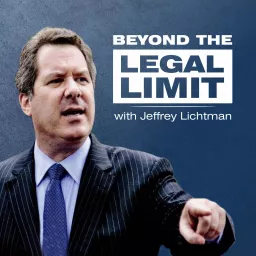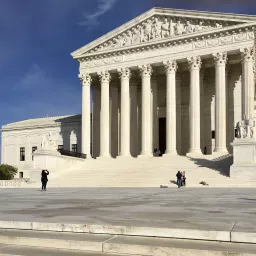Bump Stocks: Legal Battles and Public Safety Concerns in America

Understanding Bump Stocks: History, Mechanism, and Legal Controversy Bump stocks have been a contentious topic in the United States for several years, especially following high-profile mass shootings. These devices, which can significantly increase the rate of fire of semi-automatic weapons, have sparked intense debate over gun control and Second Amendment rights. The recent U.S. Supreme Court decision overturning the federal ban on bump stocks, initially imposed after the 2017 Las Vegas mass shooting, has reignited discussions on this controversial issue. Bump stocks have been at the center of a polarizing national conversation, with proponents arguing for the protection of gun rights and opponents raising concerns about public safety. The debate surrounding these devices highlights the complex intersection of constitutional rights, regulatory authority, and the ongoing challenge of addressing gun violence in the United States. What Are Bump Stocks? A bump stock is a firearm accessory that allows a semi-automatic rifle to fire at a rate similar to that of a fully automatic weapon. It replaces the standard stock and harnesses the recoil energy of the firearm, "bumping" the weapon back and forth between the shooter's shoulder and trigger finger. This motion simulates the continuous trigger pull required for automatic fire, enabling a rapid discharge of ammunition at a rate that can approach or even exceed that of a machine gun. The mechanism behind bump stocks is relatively simple, yet it has profound implications for the lethality of semi-automatic firearms. By introducing a mechanical leverage system that utilizes the recoil energy of each shot, bump stocks effectively convert a semi-automatic rifle into a rapid-fire weapon, blurring the line between legal and illegal modifications. History and Development Bump stocks were initially marketed in the early 2000s as a novelty item, intended for recreational shooting and providing a relatively inexpensive way for gun enthusiasts to experience simulated automatic fire. They gained widespread attention after the 2017 Las Vegas mass shooting, where a gunman used bump stocks to kill 58 people and injure hundreds more, making it the deadliest mass shooting in modern U.S. history. In the early 2000s, the concept of bump stocks was relatively niche and known primarily within specialized circles of gun enthusiasts and recreational shooters. Originally designed to help individuals with limited mobility experience shooting, these devices quickly caught the attention of those seeking to replicate the experience of automatic fire without the high costs and legal restrictions associated with fully automatic weapons. The relatively simple mechanism of bump stocks, combined with their affordability, made them an attractive option for a wide range of consumers interested in simulating the rapid-fire capabilities of machine guns. As bump stocks gained popularity, manufacturers began producing and marketing them more widely, capitalizing on the demand from gun owners and collectors seeking novel shooting experiences. However, the devices remained largely under the radar of the general public and policymakers until the tragic events of 2017. Following their introduction, bump stocks remained largely unregulated and out of the public spotlight until the Las Vegas shooting in 2017. The massacre, which resulted in 58 deaths and over 800 injuries, brought bump stocks into the national spotlight and sparked intense public scrutiny and debate. Investigations revealed that the shooter had used multiple firearms equipped with bump stocks, enabling him to fire hundreds of rounds per minute into the crowd from his hotel suite. The public outcry was immediate and widespread, with calls for a ban on the devices echoing across the country from both lawmakers and gun control advocates. Proponents of a ban argued that bump stocks posed a significant public safety risk by effectively converting semi-automatic firearms into machine guns, circumventing existing regulations and enabling an unprecedented level of lethality in civilian hands. Opponents, however, maintained that bump stocks were legal accessories and that their regulation or prohibition would infringe upon Second Amendment rights. The debate over bump stocks quickly escalated, reflecting the deep divisions within American society regarding gun control, public safety, and the interpretation of constitutional rights. In the aftermath of the Las Vegas shooting, bipartisan efforts to ban bump stocks gained momentum as the nation grappled with the devastating consequences of their use in a mass shooting. Lawmakers and gun control advocates argued that these devices posed an unacceptable risk to public safety, effectively converting semi-automatic firearms into machine guns and enabling a level of rapid fire that was never intended for civilian use. In December 2018, the Trump administration announced a federal ban on bump stocks, classifying them as machine guns under the National Firearms Act. This regulation required owners to destroy or surrender their bump stocks, making their possession illegal and subject to criminal penalties. The decision to ban bump stocks through regulatory action was seen as a significant step toward addressing the potential dangers posed by these devices. However, it also sparked immediate legal challenges from gun rights groups and individuals who argued that the Bureau of Alcohol, Tobacco, Firearms and Explosives (ATF) had overstepped its regulatory authority. The federal ban on bump stocks faced a series of legal challenges from various organizations and individuals who contended that the ATF's reclassification of bump stocks as machine guns was a misinterpretation of existing law and infringed upon Second Amendment rights. These opponents argued that the definition of a machine gun under the National Firearms Act was clear and did not encompass devices like bump stocks, which rely on the shooter's physical input to simulate automatic fire. They maintained that the ATF had exceeded its regulatory authority by unilaterally redefining the scope of the law without congressional action. The legal battles surrounding the bump stock ban highlighted the deep divisions within American society regarding gun control and the balance between public safety and individual freedoms. The debates centered on the interpretation of existing laws, the limits of regulatory authority, and the extent to which devices like bump stocks should be subject to regulation or prohibition. On June 15, 2024, the U.S. Supreme Court issued a landmark decision overturning the federal ban on bump stocks, ruling that the ATF had exceeded its authority in reclassifying bump stocks as machine guns under the National Firearms Act. This ruling has significant implications for gun control policy, the regulatory powers of federal agencies, and the ongoing debate over Second Amendment rights. In a closely divided decision, the Supreme Court ruled that the definition of a machine gun under the National Firearms Act is clear and unambiguous, and that bump stocks do not fall within that definition. The Court held that the ATF's reinterpretation of the law to include bump stocks was an overreach of its regulatory authority and infringed upon the rights of law-abiding gun owners. The majority opinion emphasized the importance of maintaining strict adherence to the text of laws as written by Congress and cautioned against the potential for regulatory overreach by executive agencies. The Court's decision effectively struck down the federal ban on bump stocks and opened the door for their legal possession and sale once again. The Supreme Court's ruling on bump stocks has far-reaching implications that extend beyond the specific issue of these devices. The decision has reignited debates and raised important questions across various spheres, including: Regulatory Authority: The ruling places significant limitations on the ATF's ability to unilaterally interpret and enforce firearm regulations. It underscores the need for clear legislative action from Congress on contentious issues like bump stocks, rather than relying on regulatory reinterpretations by executive agencies.
Gun Control Debate: The Supreme Court's decision is likely to intensify the ongoing debate over gun control in the United States. Advocates for stricter gun laws argue that devices like bump stocks pose a significant public safety risk and enable the rapid fire traditionally associated with illegal machine guns. Opponents, on the other hand, view the ruling as a reinforcement of Second Amendment protections and a necessary check on overreaching regulations. Market Impact: With the federal ban lifted, bump stocks may re-enter the market, raising concerns about their potential use in future mass shootings or other criminal activities. This has led to calls for Congress to address the issue through new legislation that explicitly regulates or prohibits these devices. Second Amendment Rights: The decision is seen as a victory by gun rights activists, who view it as a necessary reinforcement of Second Amendment protections and a reaffirmation of the right to bear arms. However, it also highlights the contentious balance between individual rights and public safety, as well as the need for clear and consistent laws governing firearm accessories. Gun rights advocates celebrated the Supreme Court's ruling as a significant victory for the protection of Second Amendment rights. They argued that the ATF's decision to ban bump stocks was an overreach of regulatory authority and that the regulation of firearms and their accessories should be determined by Congress, not by executive agencies acting unilaterally. Many proponents of gun rights view the ruling as a necessary defense of the constitutional right to bear arms, emphasizing that responsible gun ownership should not be infringed upon by br















![[F]law School [F]law School](https://podcastaddict.com/cache/artwork/thumb/5231624)

